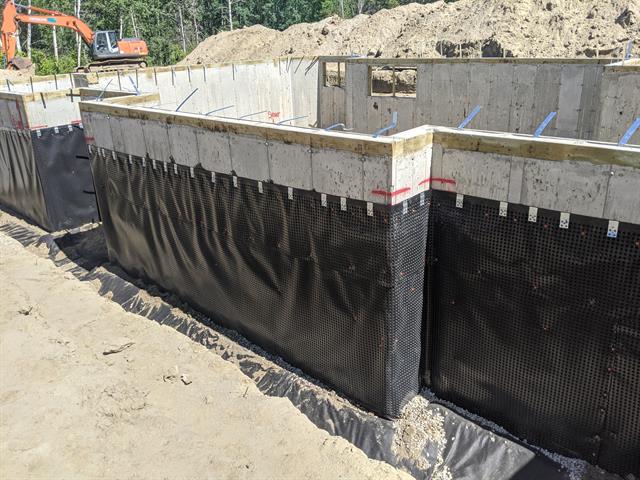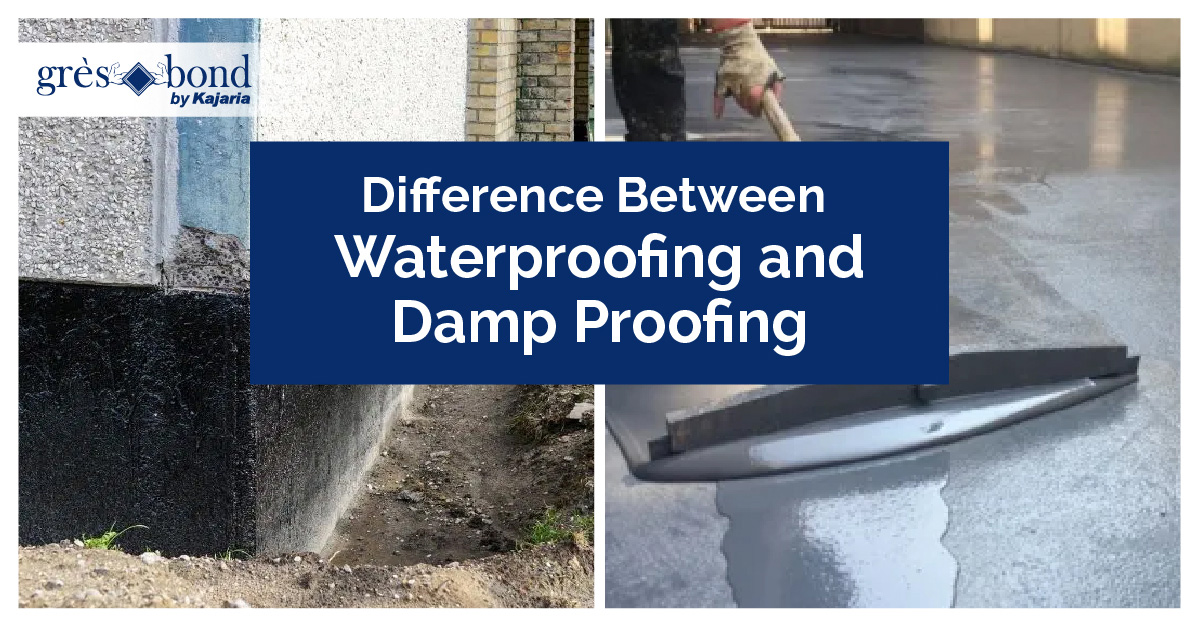Most common causes of penetrating damp and how mould removal newcastle can help
Exploring the Different Strategies and Solutions for Effective Damp Proofing
Moisture in structures postures significant challenges to both architectural honesty and indoor air high quality. Various techniques and remedies have emerged to combat this prevalent issue. From traditional damp-proof membranes to innovative chemical treatments, each approach supplies special benefits. Comprehending these choices is vital for effective moisture control. However, choosing the appropriate remedy depends upon particular building conditions and needs, prompting more expedition into the most reliable moist proofing techniques available.
Comprehending the Root Causes Of Dampness
Although wetness can occur from various resources, understanding these reasons is essential for efficient remediation. Generally, moisture stems from three key resources: climbing moist, passing through moist, and condensation. Climbing damp takes place when groundwater travels up through permeable products, such as brick or rock, frequently as a result of a lack of a reliable barrier (mould removal newcastle). Passing through damp is commonly brought on by outside variables, including roofing leakages, faulty rain gutters, or harmed wall surfaces, permitting water to infiltrate a property. Condensation, on the other hand, results from excess dampness airborne, often intensified by inadequate ventilation and temperature distinctions, causing water beads basing on surface areas. Determining these underlying concerns is crucial, as each sort of moisture needs a tailored method for remediation. Proper evaluation aids in determining the most effective services, inevitably safeguarding the architectural honesty of a structure and enhancing indoor air quality
Standard Damp-Proof Membrane Layers

Chemical Damp-Proofing Solutions
Chemical damp-proofing solutions use a cutting-edge method to avoiding wetness intrusion in buildings. These approaches commonly entail the application of fluid chemicals that permeate masonry and form an obstacle versus increasing damp. Typically used chemicals consist of silanes, siloxanes, and various other water-repellent agents that respond with surface area materials to create a hydrophobic layer.The application process typically needs drilling openings into the walls, infusing the chemical option, and enabling it to heal. This method is specifically helpful for older structures where typical damp-proof membrane layers may be not practical. Additionally, chemical damp-proofing can be less turbulent and much more cost-effective than considerable restoration projects.While effective, these options depend on appropriate application and environmental problems for peak performance. Routine upkeep and monitoring are important to assure the longevity of the damp-proofing treatment. On the whole, chemical damp-proofing represents a flexible alternative for protecting structures versus moisture-related damages
Cavity Wall Surface Building Strategies
Tooth cavity wall surface construction methods provide countless benefits, particularly in dampness control and power efficiency. By integrating an air void in between two layers of masonry, these walls properly mitigate water ingress while improving insulation. This mix not just shields frameworks from dampness however additionally adds to lowered energy consumption.
Benefits of Cavity Walls
When thinking about reliable wet proofing methods, the advantages of cavity walls stand apart prominently. Cavity walls consist of two separate layers, creating an air gap that effectively reduces moisture penetration. This style lessens the danger of moisture, as the outer wall acts as a barrier versus rainfall and water access. Furthermore, cavity walls boost thermal insulation, which adds to power effectiveness by decreasing warm loss. They additionally supply audio insulation, assisting to create a quieter interior setting. Additionally, the air space enables for ventilation, which aids in dampness control and lowers the probability of mold growth. These advantages not only boost the general comfort of a building yet likewise contribute to its long life and structural integrity.
Dampness Control Methods
Effective dampness control strategies are critical in cavity wall surface building to guarantee long-lasting defense against moisture. One primary technique entails the incorporation of weep holes, which facilitate water drainage from the dental caries, preventing build-up. In addition, making use of breathable membranes can assist take care of wetness degrees while allowing trapped vapor to get away. Correct placement of insulation is also important, as it needs to not obstruct drain courses. Guaranteeing that the outer leaves of the tooth cavity wall are created with water-resistant products improves overall toughness. Normal upkeep checks are important to determine any type of blockages or damage early, safeguarding the framework's honesty. Inevitably, a mix of these strategies forms a basics durable defense versus wetness breach in cavity wall surfaces.
Insulation and Energy Effectiveness
Insulation plays a vital role in enhancing energy effectiveness within cavity wall construction. By incorporating insulating products, these wall surfaces develop a thermal barrier that reduces warm loss and decreases energy intake. Reliable insulation not just helps maintain a secure interior temperature level yet additionally alleviates the danger of dampness, as it prevents condensation within the wall surface tooth cavity. Various methods, such as using inflexible foam boards or mineral wool, can be employed to attain suitable insulation performance. Additionally, correct setup is vital to ensure that gaps and spaces are minimized, which can or else jeopardize power performance. Inevitably, a well-insulated tooth cavity wall surface contributes greatly to total sustainability and lowers home heating and cooling prices for house owners.
External Damp Proofing Approaches
External wet proofing methods are crucial for safeguarding frameworks from wetness seepage. Two reliable techniques consist of the application of waterproof membranes and the installment of French drains. These options help reduce water accumulation and preserve the stability of buildings.
Waterproof Membrane Application
While numerous approaches exist for protecting against wetness ingress, the application of water-proof membrane layers remains a very effective exterior wet proofing technique. These membranes are commonly made from materials such as polyethylene, rubber, or changed bitumen, offering a durable obstacle versus water infiltration. The installation process includes using the membrane layer to the exterior surfaces of foundations or walls, guaranteeing total insurance coverage to avoid leaks. Proper bond and securing at joints are essential to optimizing performance. Waterproof membranes can be applied in different types, including liquid finishings and sheet membrane layers, enabling adaptability based upon the details needs of the framework. This approach not just secures structures from moisture however likewise improves their durability and structural integrity.
French Drain Installation
One effective approach for taking care of groundwater and protecting against dampness buildup around a structure's foundation is the installation of a French drainpipe. This water drainage system consists of a trench full of gravel and a perforated pipe that reroutes surface area water far from the foundation. Correct installation requires mindful preparation, guaranteeing that the drain inclines far from the structure to facilitate ideal water circulation. Furthermore, the location of the drainpipe is essential; it must be positioned in locations susceptible to pooling or excess dampness. Routine upkeep, including cleaning debris from the gravel and making sure the pipe remains unhampered, is essential for long-lasting performance. Inevitably, a well-installed French drain can greatly minimize the danger of water-related problems in foundations and basements.
Inside Waterproofing Approaches
Interior waterproofing techniques are essential for securing a building's interior from dampness infiltration and possible water damage. These approaches commonly include the application of customized materials and strategies developed to develop a moisture barrier within the framework. One common strategy is making use of water-proof finishings or sealers on walls and floors, which stop moisture from permeating surfaces.Additionally, mounting interior drainage systems, such as sump pumps, can efficiently handle water accumulation in cellars and crawl rooms. Another method includes making use of vapor barriers, which are set up to hinder dampness movement from the ground into living spaces.Moreover, attending to any kind of cracks or voids in walls or foundations with ideal sealers ensures a detailed defense against water intrusion. By carrying out these indoor waterproofing techniques, homeowner can substantially reduce the risk of mold growth, structural damages, and various other moisture-related concerns. Correct implementation of these strategies is essential for long-term protection and building integrity.
Routine Maintenance and Assessment Practices
Routine maintenance and evaluation methods are important for ensuring the long-term effectiveness of wet proofing options in any structure. Regular checks allow homeowner to identify early indicators of wetness invasion, such as peeling paint, mold development, and mildewy odors. These indicators can signify underlying concerns that need instant attention.Inspections must be conducted a minimum of each year, concentrating on susceptible areas like cellars, crawl spaces, and outside walls. During these analyses, building proprietors should check out sealants, drainage systems, and air flow to verify they function correctly.Additionally, maintaining seamless gutters and downspouts is essential, as clogged up systems can result in water accumulation near the structure. Executing a normal upkeep routine, together with prompt repair work, can substantially prolong the life-span of damp proofing actions and safeguard the architectural stability of the structure. Proactive procedures ultimately add to the total health and wellness of the living environment.
Often Asked Questions
For How Long Does Damp Proofing Usually Last?
The period of damp proofing efficiency differs, generally lasting in between 20 to half a century. Factors such as application top quality, environmental conditions, and upkeep techniques significantly affect the long life of the damp proofing treatment.

Can I Damp Evidence My Home Myself?
The private contemplated the usefulness of do it yourself damp proofing. With proper study and the ideal products, it is feasible. They likewise identified the significance of specialist support to assure lasting effectiveness and prevent future problems.
What Are the Indicators of Inefficient Damp Proofing?
Signs basics of inadequate damp proofing consist of consistent stuffy odors, noticeable mold development, peeling paint, wet patches on walls, and timber degeneration - mould treatment newcastle. Home owners need check to attend to these issues immediately to avoid additional damages and health problems
Does Damp Proofing Affect Indoor Air Top Quality?

Exactly How Much Does Professional Damp Proofing Expense?
Professional wet proofing expenses vary significantly, usually ranging from $1,000 to $5,000 depending upon the home's size, the level of the damp concern, and selected approaches. Each circumstance calls for a tailored analysis for precise rates. Typically, wetness originates from 3 main resources: increasing wet, penetrating moist, and condensation. When considering efficient damp proofing techniques, the benefits of cavity wall surfaces stand out plainly. External wet proofing methods are crucial for safeguarding frameworks from dampness infiltration. While different approaches exist for avoiding wetness access, the application of waterproof membranes remains an extremely reliable external damp proofing method. Indicators of ineffective damp proofing include relentless musty odors, visible mold and mildew development, peeling off paint, damp patches on walls, and wood degeneration.